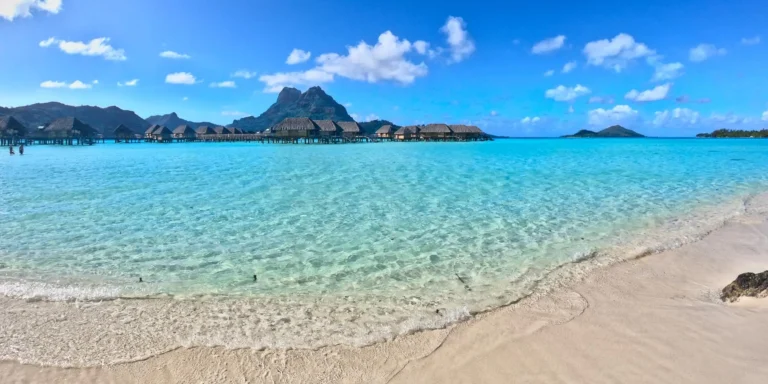
HOW MUCH DOES IT COST TO GO TO BORA BORA? HERE’S THE ANSWER!
How much does it cost to go to Bora Bora? In this article all the answers for a trip to this dream island!

French Polynesia is the dream destination of many travellers. If you imagine what paradise on earth might be like, your thoughts immediately turn to the beautiful Bora Bora, with its green island surrounded by shallow blue waters and coral reefs.
We were lucky enough to be able to take a trip to French Polynesia, and in this article we give you a little information about this magnificent country and some tips for planning a trip to French Polynesia. Here is our list “11 French Polynesia travel tips”!
When we had to choose where to spend our honeymoon, we decided on the most remote place far from Italy: French Polynesia. It’s an expensive place to visit, but we were able to make our dream come true thanks to the wedding list (thanks again to everyone who made it happen!). This country is great for a self-organised holiday, which means you can save a lot of money. A DIY trip to Polynesia is one of the safest trips you can take. This country has one of the lowest crime rates in the world and its people are friendly and always helpful.
French Polynesia is an incredibly beautiful place. It met our expectations and then some. In this article, we’ll share some useful information and tips for planning a trip to French Polynesia.
French Polynesia is an overseas collectivity belonging to France, located in the South Pacific Ocean. It consists of more than 100 volcanic and coral islands, but only about half of them are inhabited. These islands are divided into five main archipelagos:
The most famous islands of French Polynesia are Tahiti, where the capital Papeete is located, Bora Bora, Moorea, Tikehau, Fakarava and Rangiroa, and are also the most popular islands for tourists.
Many of these islands are known for their white sandy beaches, azure lagoons and luxurious tourist facilities.
With the exception of a few islands such as Tahiti, Bora Bora and Moorea, many of the islands in French Polynesia consist of atolls, with land only in parts of the ring (the motu) surrounding the lagoon.
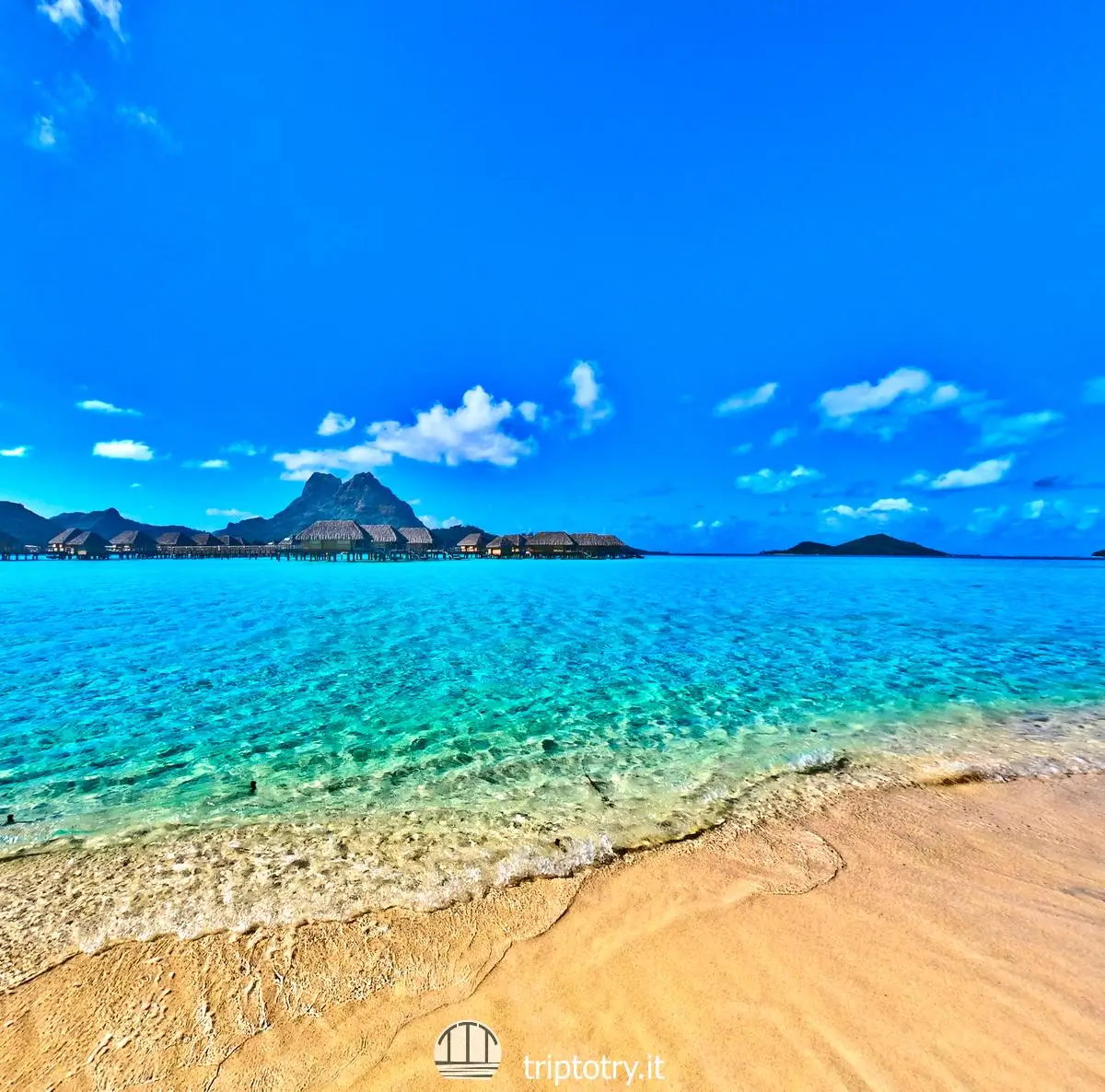
Bora Bora
As French Polynesia is part of the French Republic, in theory you would only need an identity card for a DIY trip to French Polynesia. Unfortunately, this is not the case as there is a technical stopover in America.
For traveling to French Polynesia, you must therefore be in possession of an international passport. In addition, an ESTA (Electronic System for Travel Authorisation) is required for all travellers transiting through the United States of America. It is important to apply for ESTA at least 72 hours before travel, but it is advisable to apply at least one month in advance to avoid any problems with the process.
To obtain an ESTA, you will need to complete an online form that asks for information such as your place of residence, occupation and information about family members. You will also need to declare any pending criminal convictions or proceedings. The cost of obtaining an ESTA authorisation is approximately €15 and the application must be submitted online at the official ESTA website, which can be found at this link.
An international driving licence is not required to hire a car in French Polynesia, your national driving licence is sufficient.
As for vaccinations, there are no compulsory or recommended vaccinations for visiting French Polynesia, but we advise you to check the website of your embassy for any updates.
French Polynesia is on the other side of the world from Europe. Therefore, for us Europeans, a DIY trip to French Polynesia is a long one, requiring several hours of flying, or about a full day. However, for the lucky travellers from Australia or America, the trip is much shorter and takes just a few hours.
The main international airport for French Polynesia is Faa’a Airport in Tahiti.
The airline operating direct flights to French Polynesia is Air Tahiti Nui, and you can buy tickets for your DIY Polynesia trip directly from the airline’s official website. We recommend that you buy your tickets well in advance, both because of the limited availability of flights and because of the price.
To get to French Polynesia from Europe, you will need to make at least one stopover. The typical itinerary is to fly into Charles de Gaulle airport in Paris, from where you can take an international flight to Tahiti.
There is a technical stop between Paris and Tahiti. This stopover is at Los Angeles International Airport in the United States. During the stopover in Los Angeles, you will have to go through all the immigration and customs checks as if you were entering the United States (so have your documents ready and be prepared for several levels of checks).
The total duration of the travel to Franch Polynesia is approximately 21 hours, divided roughly into 11 hours for the Paris-Los Angeles route, 8 hours for the Los Angeles-Tahiti route and two hours of stopovers. In contrast, the Auckland-Tahiti route takes approximately 5 hours.
The cost of round-trip flights to French Polynesia can vary greatly depending on the time of year you book and the offers available, so book as far in advance as possible. In general, prices can range between €2,000 and €2,500 per person for those coming from Europe or even more, depending on circumstances. The cost of a flight from New Zealand is significantly lower and is around $500, while from Los Angeles the figures vary between $1,000 and $1,500.
As you can see, your DIY trip to French Polynesia will require some effort, but we assure you that it is absolutely worth it!
If you’re planning a trip to French Polynesia, we advise you to visit at least 3 islands. The most convenient way to travel between the islands of French Polynesia is by air. Every day, there are numerous domestic flights between the main islands, with a particular concentration of flights to and from Bora Bora and Tahiti, the two main islands of the archipelago.
The airline operating these domestic flights is Air Tahiti.
The cost of domestic flights can vary considerably depending on the distance and whether there are stopovers, but the average cost is around €200 each way. You can buy tickets for your own trip to Polynesia directly from the official website, where you can also consult all the routes and daily timetables.
An alternative way to travel between neighbouring islands is by ferry. For example, there are ferry connections between Tahiti and Moorea, or between Bora Bora and Maupiti. The two main ferry companies are Aremiti and Terevau.
The crossing from Tahiti to Moorea, for example, takes between 30 and 40 minutes, depending on the type of boat, and costs just over €10.
An interesting idea we discovered while getting to know a couple of travellers in Tikehau is the possibility of using commercial ships to tour most of the main islands in French Polynesia. This is certainly a time-consuming trip, but it is a very interesting solution and a viable alternative for those who love touring and could add an adventurous touch to their travel to Franch Polynesia.
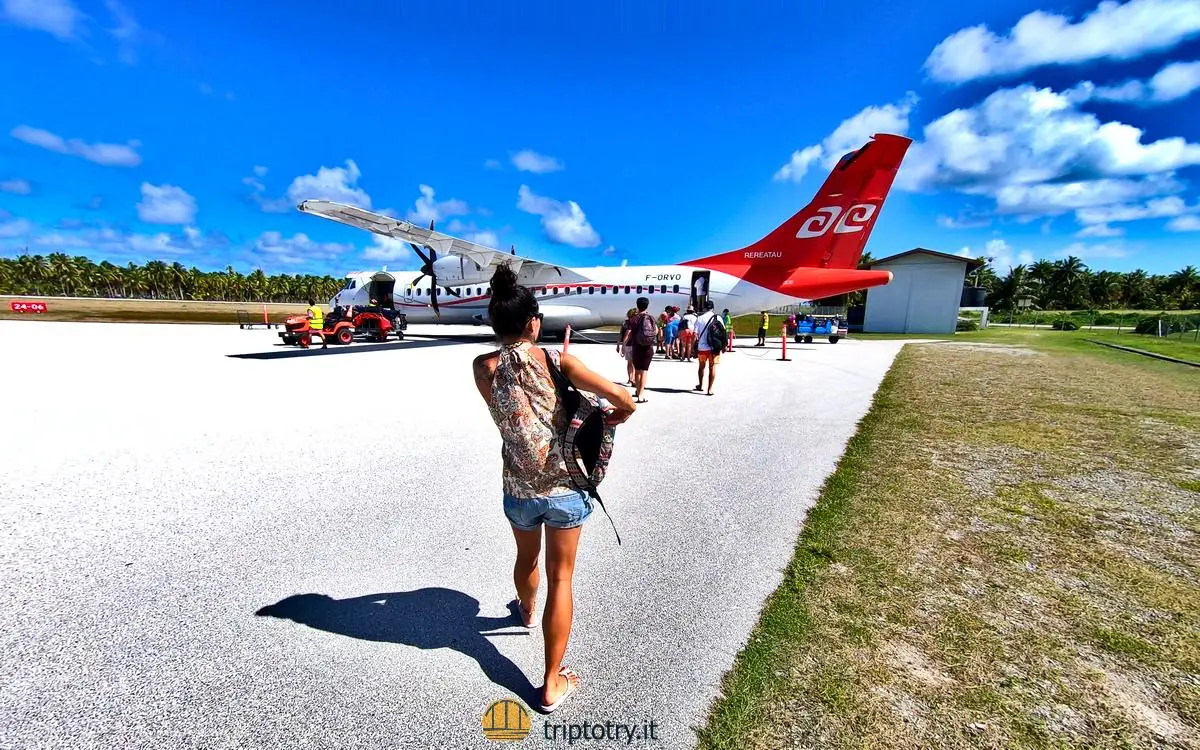
Planning a trip to French Polynesia: Air Tahiti domestic flight
The official currency of French Polynesia is the Polynesian Franc (abbreviated XPF), with an approximate exchange rate of €1 = 118 Polynesian Francs.
However, most tourist sites also accept euros or credit cards, so there is no need to carry large amounts of local currency. Similarly, if you are planning a do-it-yourself trip to Polynesia, it is always a good idea to carry enough money to cover any unexpected expenses.
You can change money or withdraw francs at the airport or in major cities such as Tahiti and Bora Bora. Remember that there may be no banks or ATMs on the more remote islands.

How much does it cost to go to Bora Bora? In this article all the answers for a trip to this dream island!
The official language of French Polynesia is Tahitian, but there are other more remote islands where different languages are spoken.
French is widely used, especially on the more populous islands and among those working in the tourism industry. English is also understood and spoken in areas frequented by tourists, so you will have no problem communicating during your DIY trip to French Polynesia.
However, we recommend that you learn a few basic words in Tahitian, such as ‘maururu’ for thank you or ‘ia ora na’ for good morning: it can be an appreciated gesture and shows respect for the local culture.
This section will be very brief as there are no crime problems on the islands of French Polynesia. As we have already mentioned, a DIY trip to Polynesia is one of the most peaceful travel experiences you can have.
The islands of French Polynesia are generally safe and not known for crime-related problems. Even in Papeete, the largest city, the likelihood of encountering security problems is extremely low (due to flight delays, we spent a whole night in Papeete in the airport area without ever noticing any ‘strange’ situations).
The locals are shy but always smiling and friendly, making them one of the sweetest and most welcoming people we have met.
These are the reasons why a DIY trip to French Polynesia is safe and an excellent choice.
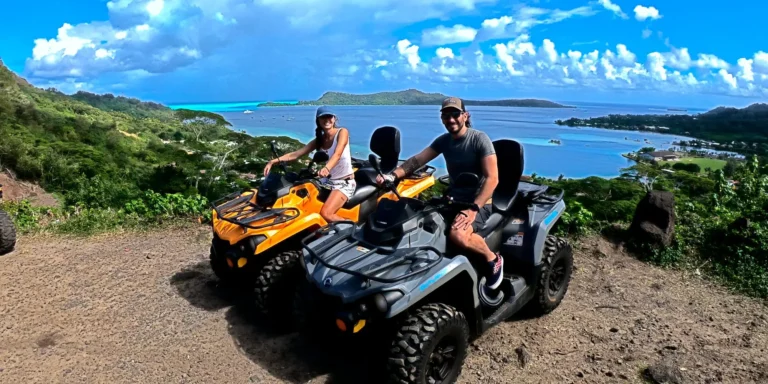
Bora Bora is the dream of travelers looking for relax, but there are also many things to do in Bora Bora! Here are 8 activities to do in Bora Bora!
The climate in French Polynesia varies slightly depending on the archipelago, but in general the best time to visit these islands is from May to October. Rainfall is less frequent during these months, although short showers followed by sunshine are common. This is definitely the best time to visit Polynesia.
During the winter months, rainfall is more frequent and there is a greater risk of cyclones. However, temperatures remain relatively constant throughout the year, with lows usually between 23-25°C and highs between 28-30°C.
In general, short spells of rain are normal, especially on the ‘higher’ islands (such as Bora Bora and Moorea). This is because for a few months of the year, winds from the east meet the islands’ mountains and form rain clouds. The rain is not annoying and usually lasts only a few minutes.
Therefore, a DIY trip to Polynesia should be organised during the summer period from May to October and the winter months should be avoided at all costs.
French Polynesia is dominated by luxury resorts run by renowned international hotel chains.
However, there are also local options, including smaller, more discreet boutique resorts. Some of these boutique resorts are located on motu (islets) on tiny atolls, offering a very intimate atmosphere and an exclusive experience. To be fair, some of the motu are predominantly ‘man-made’ in the sense that the motu are originally coral structures and the sand you find in the resorts is often filler. In addition, in some cases, coral gardens have been created ‘ad hoc’ in these areas as a result of clever reef replenishment work.
In recent years, especially on the larger islands, a number of local guesthouses have emerged as an alternative accommodation option. These guesthouses are usually located on the main island and not on the more isolated motu.
Prices vary widely, from around €100 for a room in a guesthouse to over €1000 per night for an overwater bungalow in a luxury resort.
The high prices charged by the resorts are certainly justified by the exclusive location and a very comprehensive service, including transfers to the main islands (such as Bora Bora), quality excursions, a high standard of catering and small details (such as the coffee machine with Nespresso pods in the room).
We spoke to some locals and they told us that while these big resorts are good for the local economy and create jobs, they tend to hire managers from outside the area.
If you’re planning a DIY trip to French Polynesia, you can save a lot by booking directly with the hotel you want to stay at. Just email or go to the hotel’s website to make your booking, but we’d recommend doing it well in advance.
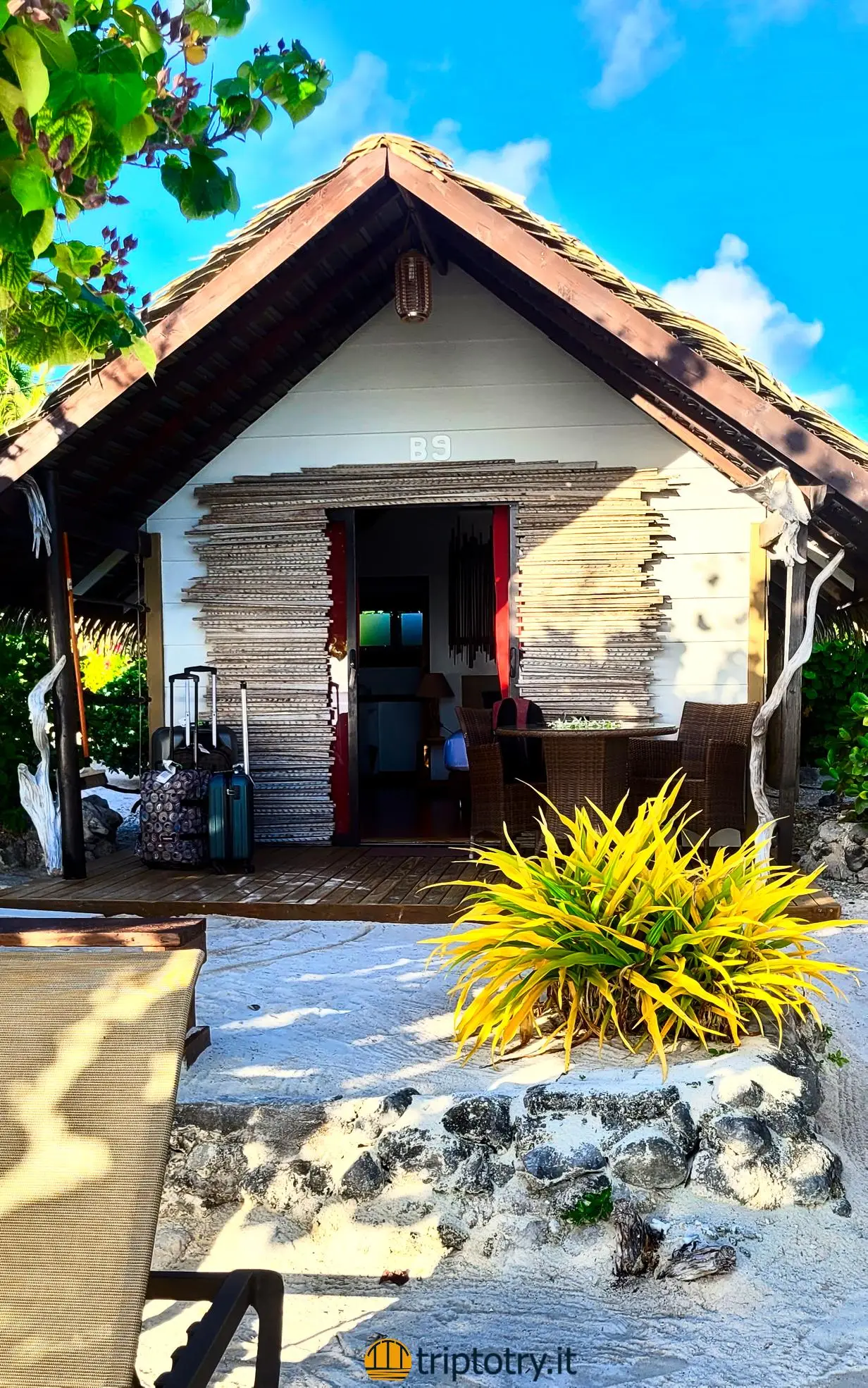
French Polynesia travel tips: Beach bungalow in Fakarava
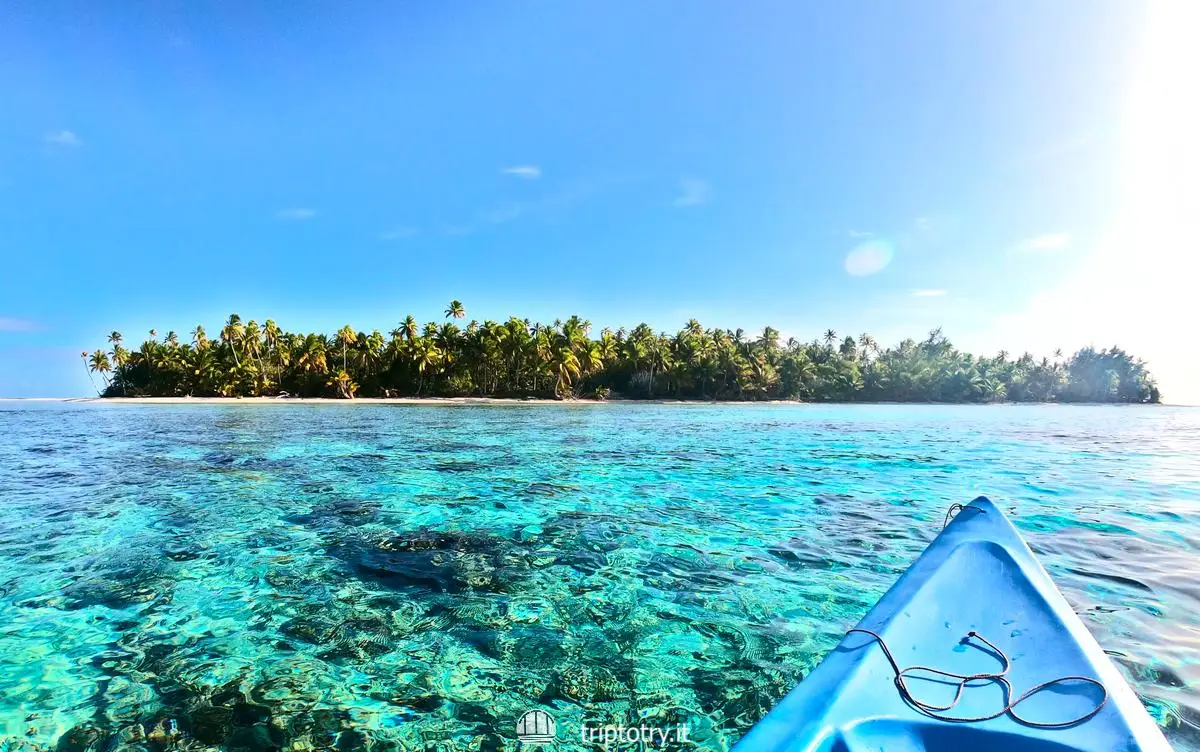
French Polynesia travel tips: Our wonderful motu in Tikehau
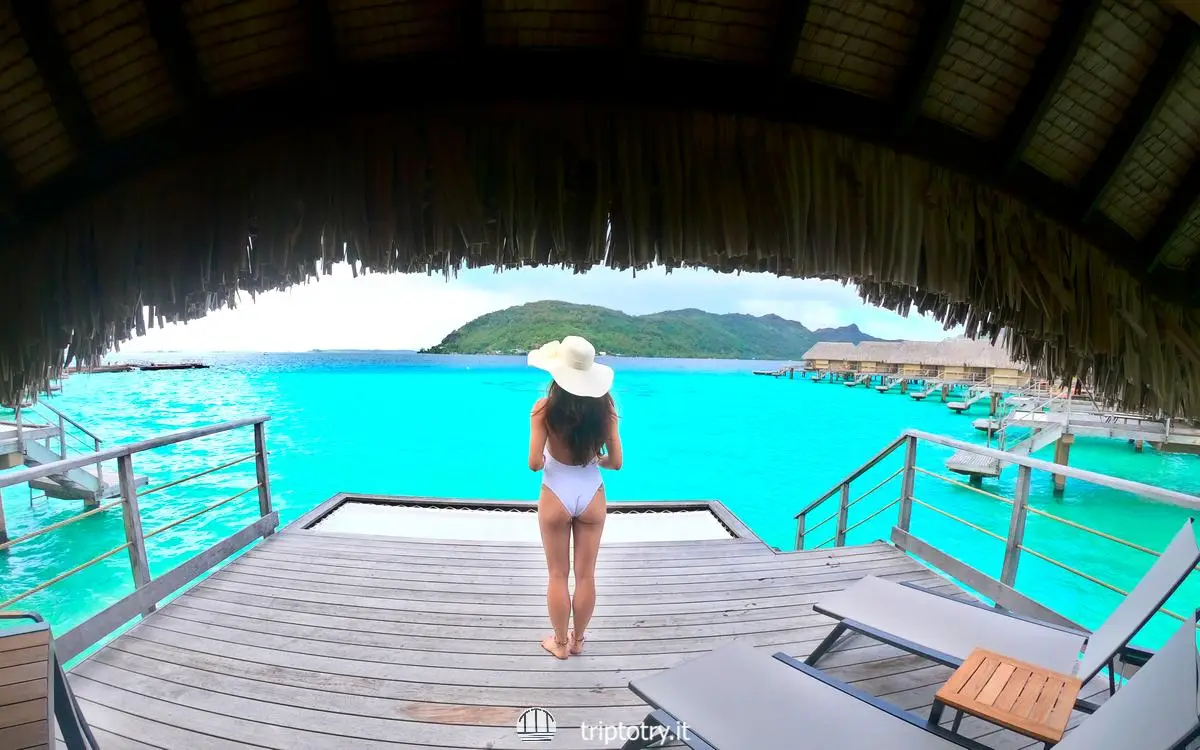
French Polynesia travel tips: Overwater bungalow in Bora Bora
In the resorts, the cuisine is mainly international, so you will have no problem finding dishes to suit your culinary tastes.
In local restaurants or in more remote areas, the cuisine is strongly influenced by the availability of local ingredients, which are mainly based on vegetables, fruit (especially coconut, in all its possible forms) and fresh fish.
Fresh fish is a delicacy and is often simply prepared on the grill. You will find a wide variety of fish, from shellfish to freshly caught tuna (even parrot fish). Often, dishes are accompanied by white rice or rice topped with coconut milk.
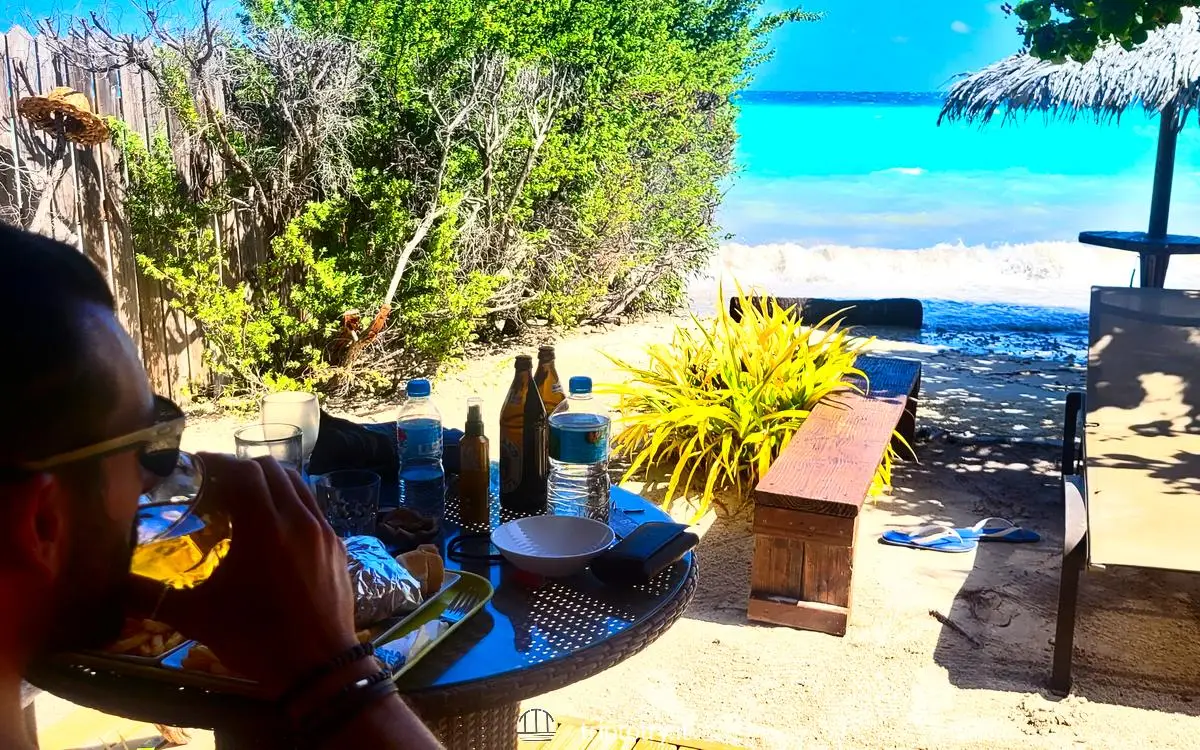
Planning a trip to French Polynesia: Lunch at the beach in Fakarava
Contrary to what one might expect, the cost of living in French Polynesia, even outside the resorts, is still quite high. This is due to the fact that the archipelago has to import most of its raw materials and is located at a considerable distance from the mainland. Furthermore, due to the geographical location, services such as waste disposal and power generation are also particularly complex and consequently expensive.
Here are some examples of prices:
Fortunately, salaries are generally in line with the cost of living. For example, a novice tour guide can earn a salary of about 1,800 €.
With this article we hope to have given you some interesting tips for traveling to French Polynesia and, if like us you have a DIY trip to Polynesia as a dream, to have encouraged you to make it a reality! Do not hesitate to contact us for any further information you may need and above all…trip to try!